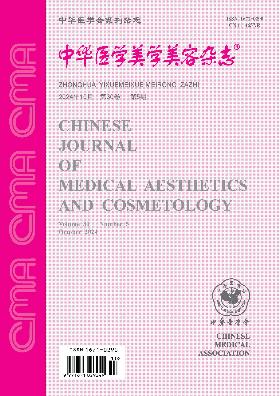Botulinum toxin A poisoning by local aesthetic injection: clinical and electrophysiological analyses of 20 cases
引用次数: 0
Abstract
Objective To observe the clinical and electrophysiological characteristics of botulinum toxin A poisoning induced by local cosmetic injection, and to explore the possible pathogenesis. Methods Clinical data of 20 patients with botulinum toxin type A local cosmetic injection poisoning admitted to our hospital from January 2016 to December 2018 were collected and electrophysiological tests were carried out. Results The clinical manifestations of 20 patients were mainly 15/20 (75.0%) with limb weakness, and the proximal end was heavier than the distal 20/20 (100%), and the upper limb was heavier than the lower limb 26/20 (80%), followed by dysphagia 12/20 (60%), dysarthria 5/20 (25%), cervical muscle weakness 5/20 (25%), extraocular muscle paralysis 4/20 (20%), masseter muscle weakness 3/20 (15%) and respiratory muscle weakness 2/20 (5.0%) with respiratory failure 1/20 (5.0%). The results of neurophysiological examination showed the highest rate of SFEMG (90.0%), followed by RNS (80.0%), EMG (65.0%) and NCV (40.0%), suggesting that neuromuscular junction dysfunction was the main presentation. Patients who actively gave botulinum antitoxin injection therapy and symptomatic support treatment had good prognosis. Conclusions Local cosmetic injection of botulinum toxin type A may lead to poisoning. The symptoms of poisoning are mainly caused by limb weakness. Neuroelectrophysiological examination can assist in the diagnosis of botulinum toxin poisoning. Key words: Botulinum toxins, type A; Botulinum antitoxin; Injections; Electrophysiology局部美容注射A型肉毒毒素中毒20例临床及电生理分析
目的观察局部美容注射剂致A型肉毒毒素中毒的临床及电生理特点,探讨可能的发病机制。方法收集我院2016年1月至2018年12月收治的20例A型局部美容注射剂肉毒杆菌毒素中毒患者的临床资料,进行电生理检查。结果20例患者临床表现以15/20(75.0%)肢无力为主,近端重于远端20/20(100%),上肢重于下肢26/20(80%),其次为吞咽困难12/20(60%)、构音障碍5/20(25%)、颈肌无力5/20(25%)、眼外肌麻痹4/20(20%)、咬肌无力3/20(15%)、呼吸肌无力2/20(5.0%)伴呼吸衰竭1/20(5.0%)。神经生理检查结果显示,SFEMG检出率最高(90.0%),其次为RNS(80.0%)、EMG(65.0%)和NCV(40.0%),提示以神经肌肉连接功能障碍为主要表现。积极给予肉毒杆菌抗毒素注射治疗及对症支持治疗的患者预后良好。结论局部美容注射A型肉毒杆菌毒素可能导致中毒。中毒的症状主要是四肢无力。神经电生理检查有助于肉毒杆菌中毒的诊断。关键词:A型肉毒杆菌毒素;肉毒抗毒素;注射;电生理学
本文章由计算机程序翻译,如有差异,请以英文原文为准。
求助全文
约1分钟内获得全文
求助全文
来源期刊
自引率
0.00%
发文量
4641
期刊介绍:
"Chinese Journal of Medical Aesthetics and Cosmetology" is a high-end academic journal focusing on the basic theoretical research and clinical application of medical aesthetics and cosmetology. In March 2002, it was included in the statistical source journals of Chinese scientific and technological papers of the Ministry of Science and Technology, and has been included in the full-text retrieval system of "China Journal Network", "Chinese Academic Journals (CD-ROM Edition)" and "China Academic Journals Comprehensive Evaluation Database". Publishes research and applications in cosmetic surgery, cosmetic dermatology, cosmetic dentistry, cosmetic internal medicine, physical cosmetology, drug cosmetology, traditional Chinese medicine cosmetology and beauty care. Columns include: clinical treatises, experimental research, medical aesthetics, experience summaries, case reports, technological innovations, reviews, lectures, etc.

 求助内容:
求助内容: 应助结果提醒方式:
应助结果提醒方式:


